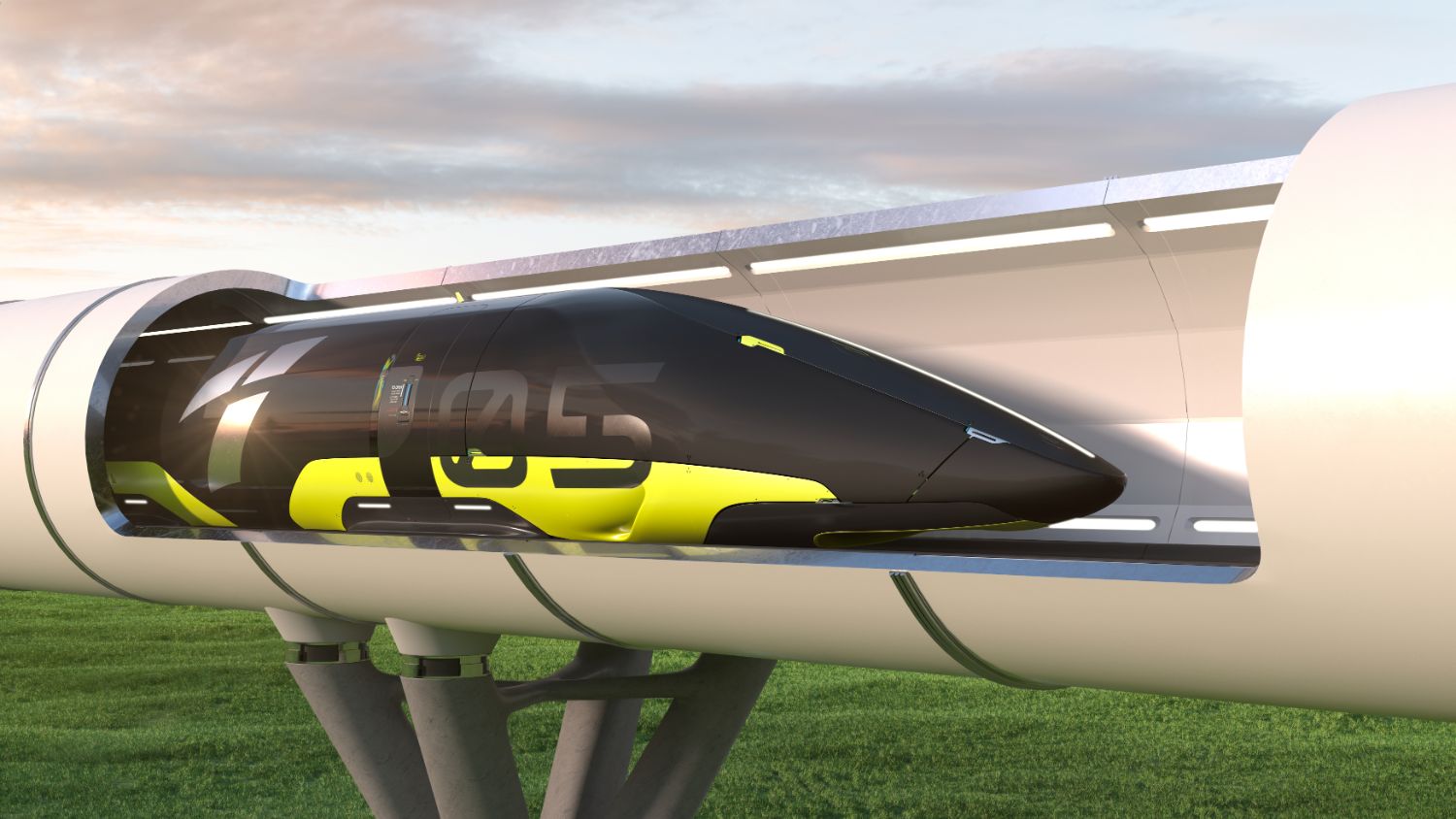Hyperloop
Hyperloop is an ultra-high-speed ground transportation system for passenger and cargo proposed as a concept by Elon Musk, CEO of Tesla and SpaceX, in a white paper back in 2013.
The system consists of sealed and partially evacuated tubes, connecting mobility hubs in large metropolitan areas, and pressurized vehicles, usually called pods, which can move at very high speeds, thanks to contactless levitation and propulsion systems as well as to the low aerodynamic drag. With this system the door-to-door travel time on medium-range distances can be considerably reduced compared to current connections.
Moreover, with fully-electric operations the system aims at being climate-neutral.

Climate-Neutral
With fully-electric and efficient operations, the system aims at being climate-neutral over the course of its life cycle.
City Center to City Center
By connecting mobility hubs in large metropolitan areas the door-to-door travel time is considerably reduced.
Ultra-High Speeds
Contactless levitation and propulsions systems as well as the low pressure environment allow the pod to travel efficiently at ultra-high speeds.

TUM Hyperloop
In 2015 a student initiative was founded at the Technical University of Munich (TUM) to develop and build prototypes for the SpaceX Hyperloop Pod Competitions. Over the last half decade the team has won all editions of the event and gathered extensive experience in the field of ultra-high-speed ground transportation.
In 2019 the Technical University of Munich, working closely together with the successful student initiative NEXT Prototypes, has launched the ambitious TUM Hyperloop program with the aim to design and build a full-scale ultra-high-speed ground transportation system, based on the ideas of the Hyperloop concept. The program perfectly combines the expertise of the various excellent research institutes of TUM with the ingenuity and motivation of the students and young researchers in the team.
To fulfill its goals, the team is working hard both on developing the necessary technology and its components as well as on investigating and optimizing the system as a whole, making sure that aspects such as safety and economical feasibility are considered. In particular, a 24 meter long demonstrator including a full-scale pod is currently in development and it is going to be built and put into operation in 2021





0 Comments
Post a Comment